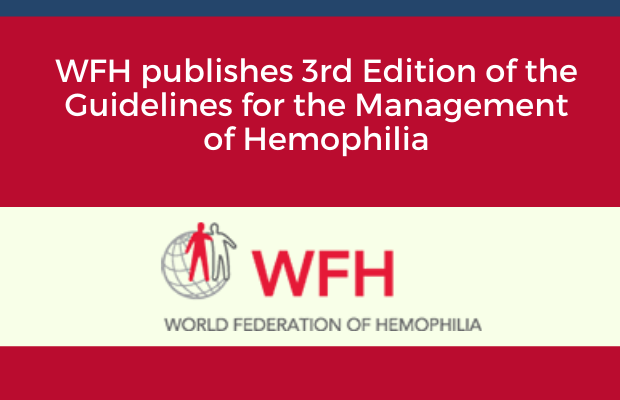WFH publishes 3rd Edition of the Guidelines for the Management of Hemophilia

The World Federation of Hemophilia (WFH) has published the 3rd Edition of the Guidelines for the Management of Hemophilia, replacing the 2nd Edition published in 2012. The 158-page document was put together with the contribution of 11 chapter leads, 21 health care provider panelists, 14 people with hemophilia/caregivers and a multitude of consultants, methodologists and reviewers from countries around the world, including many Canadians.
The opening summary states:
This new edition of the World Federation of Hemophilia (WFH) guidelines for the management of hemophilia comes at an exciting time in the evolution of the diagnosis and treatment of this condition. Since the publication of the second edition in 2012, tremendous advances have been made in several aspects of the management of hemophilia. These include genetic assessment as well as therapy with many innovative therapeutic products including extended half-life factor VIII (FVIII) and factor IX (FIX) products, a bispecific antibody, and hemostasis rebalancing drugs now in clinical development. All of these allow for more effective hemostasis than was possible in the past. Laboratory monitoring of therapies is better defined and accepted as the only way to change the natural history of bleeding. There are highly effective therapies for patients with inhibitors. Outcome assessment with validated clinimetric instruments is widely advocated and practiced. All these advances are reflected in this third edition of the WFH guidelines, with new chapters devoted to several of these topics along with a new chapter on principles of care that aims to provide a framework for development of a comprehensive healthcare system for hemophilia including advocacy and empowerment for people with hemophilia (PWH). The recommendations in this edition were all developed through a formal evidence- informed and consensus-based methodology involving multidisciplinary healthcare professionals (HCPs) and well-informed PWH. While directed primarily at HCPs, these guidelines should also be very useful for PWH as well as advocacy organizations.
The guidelines can be viewed and downloaded at www.wfh.org/guidelines.
Editor’s note: You can also click below to read a CHS CONTACT report from the WFH Virtual Summit held last June regarding the new guidelines.
New hemophilia guidelines introduced at WFH Virtual Summit 2020




